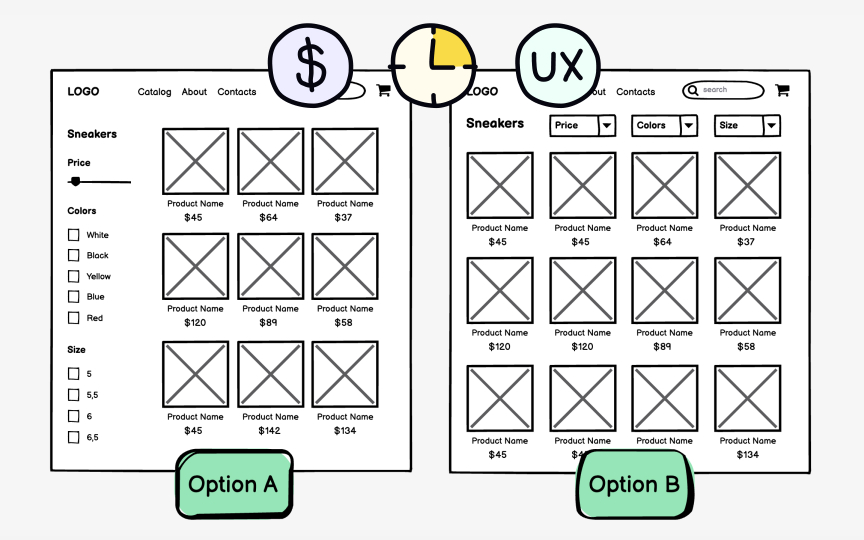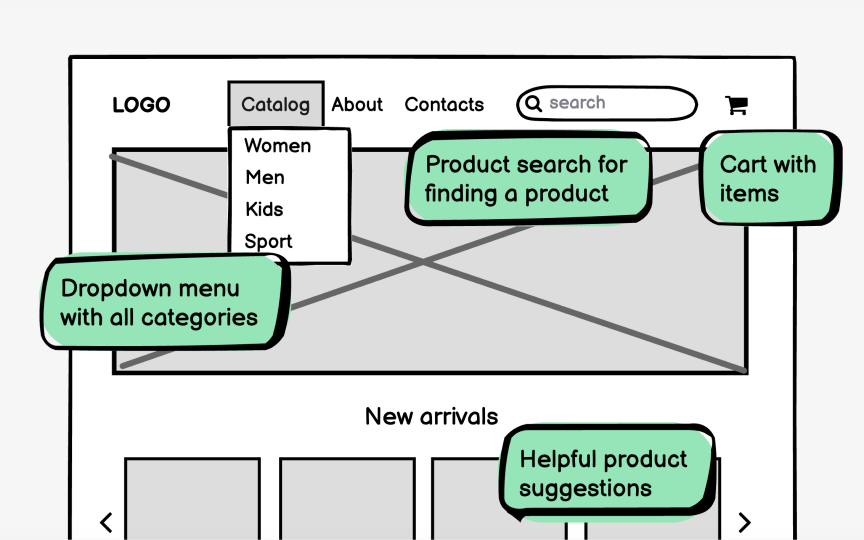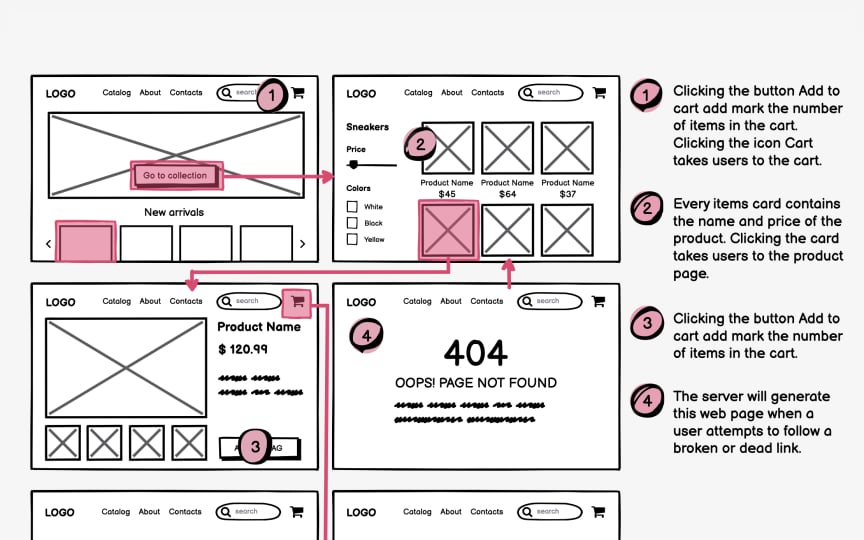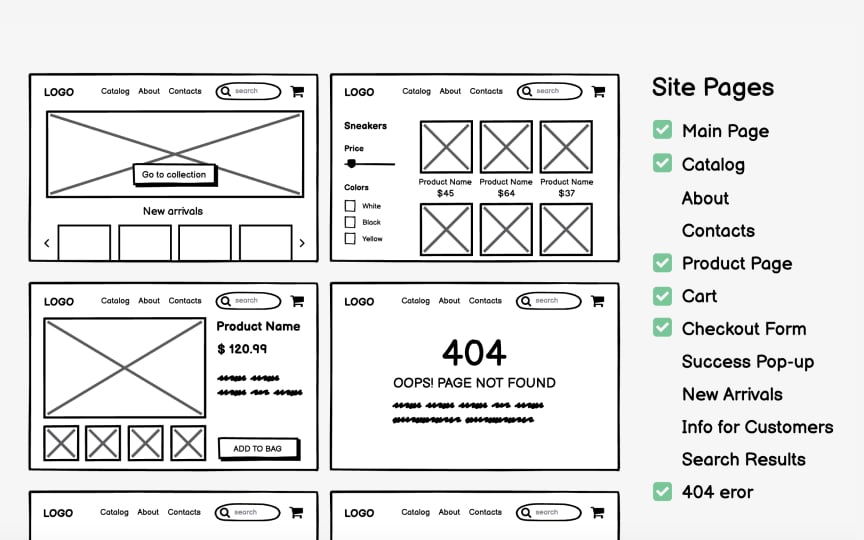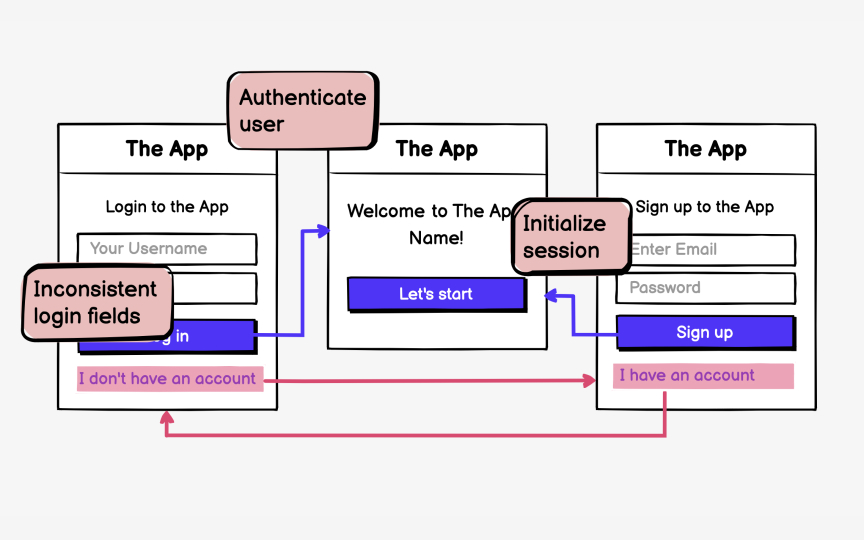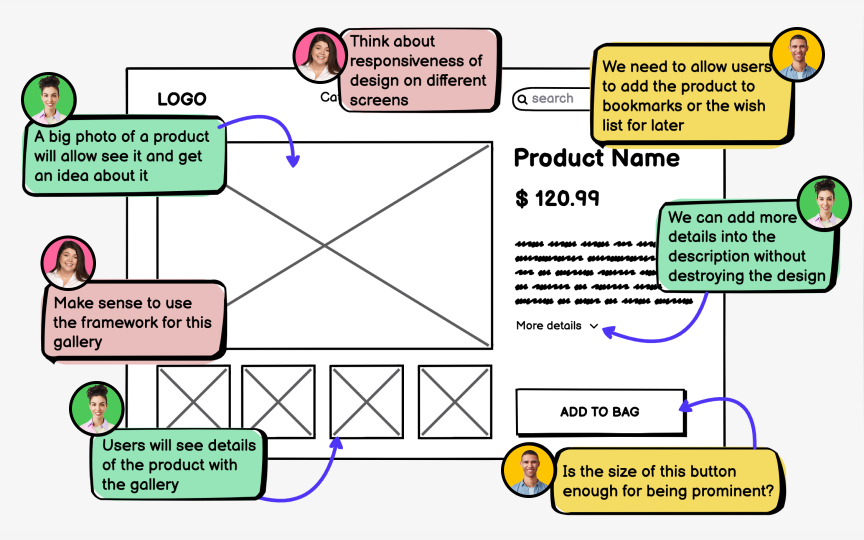Wireframes Benefits by Roles
Explore the widespread benefits of wireframes in the development process, extending beyond just designers
Many people think that wireframes are only useful for designers, but that couldn't be further from the truth. Everyone involved in the development process benefits from using wireframes. And we mean everyone: developers, designers, project managers — and also clients.
But some of these people don't know much about design, you might say. And this may be true. However, involving people with different perspectives in wireframing allows you to:
- Generate as many ideas as possible
- Cover more aspects of the product
- Establish a wide variety of approaches
- Avoid costly mistakes
Once you have done that, you can refine, discard, and combine different wireframes until you have two or three that could work. It would be costly and time-consuming to explore this number of different options in any other way.
Wireframes are the foundation of any good design. They help designers plan layouts, organize content, and test ideas before adding colors or images.
With wireframes, designers can focus on structure and usability without distractions. This makes it easier to spot problems early and fix them before development. Wireframes also improve communication between teams, ensuring everyone understands the design’s purpose.
Another big benefit is speed. Sketching a
Many designers have had bad experiences with clients interfering in the design process. Still, it's possible to share wireframes with clients without losing control of your project, and doing so has many benefits.
First, it allows you to tackle the problem from several different angles. Clients may bring up potential issues that you haven't considered. To avoid interference, use clients' help at the ideation phase when the goal is to generate as many ideas as possible. Later, you can refine, discard, and combine them until you have 2-3 that could work.
Second, sharing wireframes with clients gives them an understanding of the product and a sense of ownership. A client who has seen a
Wireframes also work great in Agile environments. For example, a product manager can use wireframes to plan what each team should tackle for each product iteration. For example, tackle the Main page first, then add a catalogue, etc.
When working in iterative chunks, you start getting feedback early in the process. This allows you to refine the design and development process as you go, saving time and money.
Involving developers in wireframing has several benefits:
- Specification documents and emails are okay, but they can be hard to visualize.
Wireframes visualize technical requirements, user interactions, and data flows. That's why wireflows can give developers a much better idea about the final product. - Developers can spot problematic features and architectural flaws early in the process and suggest improvements. Involving developers in the wireframing stage will save you time and money on unnecessary development.
Sharing
- Wireframes encourage feedback and collaboration. They are easy to make and you can change them according to people's suggestions.
- Wireframes promote understanding. They ensure that teams and clients have a good understanding of the product and ensure everyone's on the same
page . Knowing the plan helps different teams concentrate on the task at hand. As for clients, they are more likely to sign off on the final design if their feedback has been heard. - Wireframes define team roles. Working on wireframes together helps each member understand the role of others. For example, designers can better understand what designs are feasible to develop and vice versa.
Pro Tip: Make sure that the wireframes are always accessible to everyone to keep communication open.
Top contributors
Topics
From Course
Share
Similar lessons

Intro to Wireframing

Wireframe Fidelity

